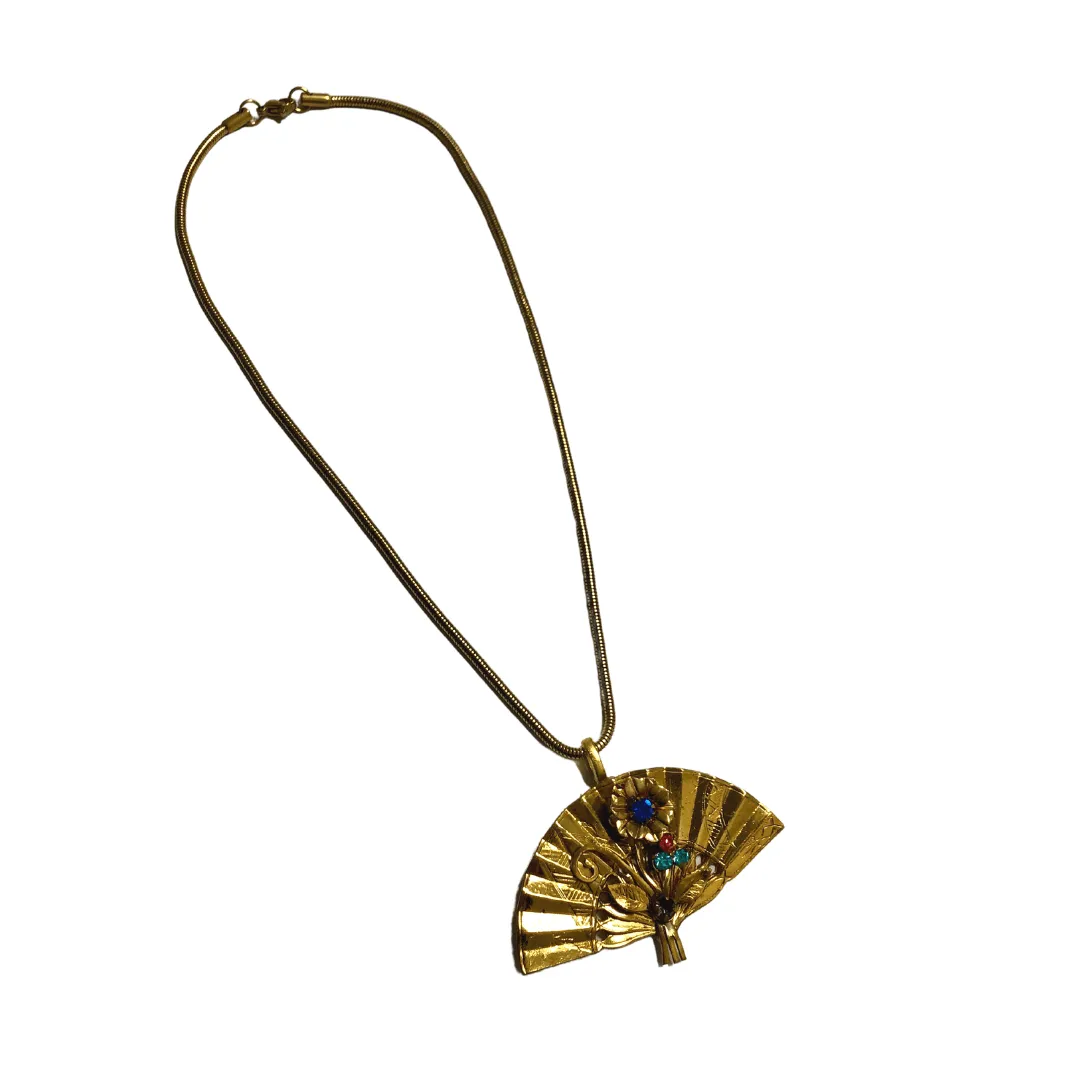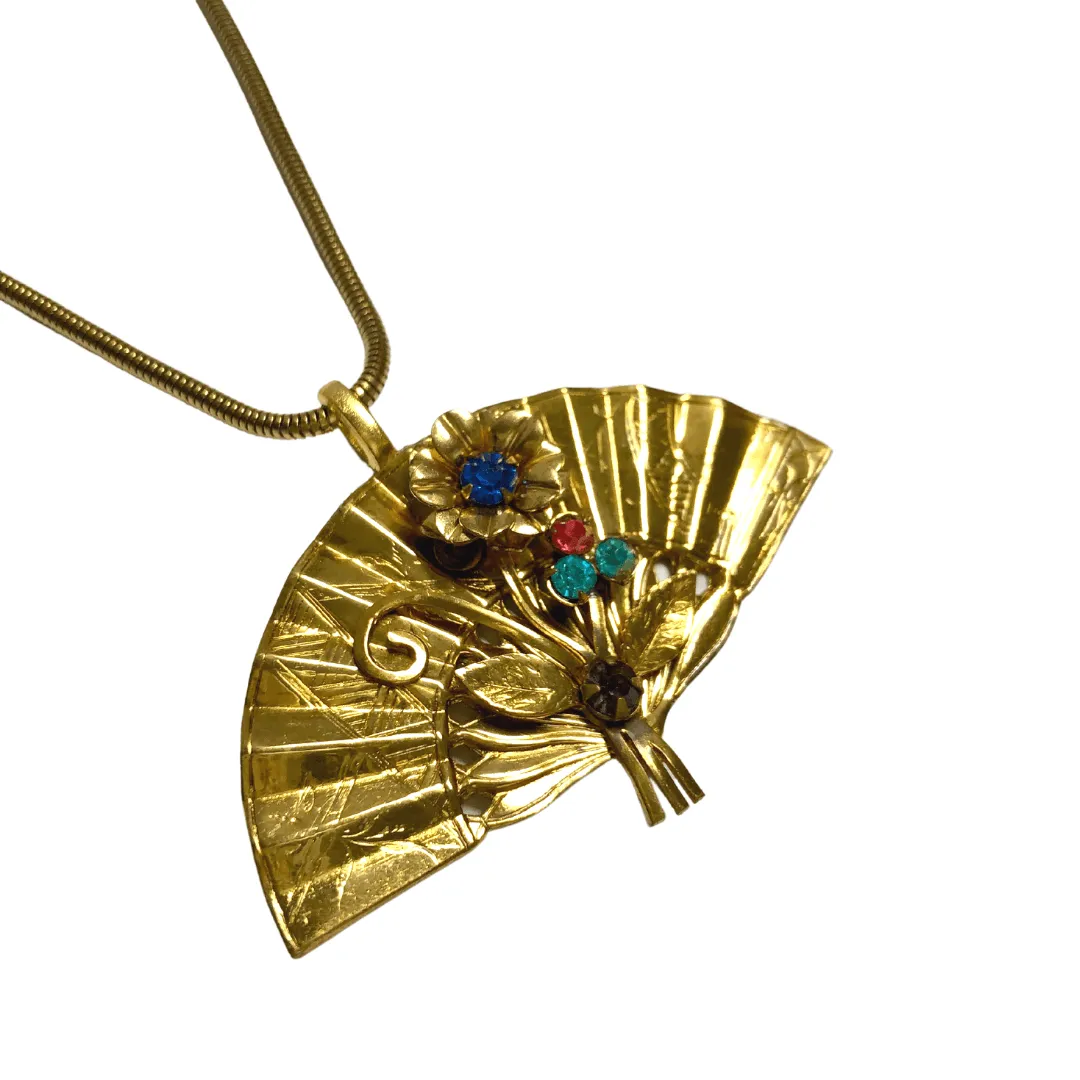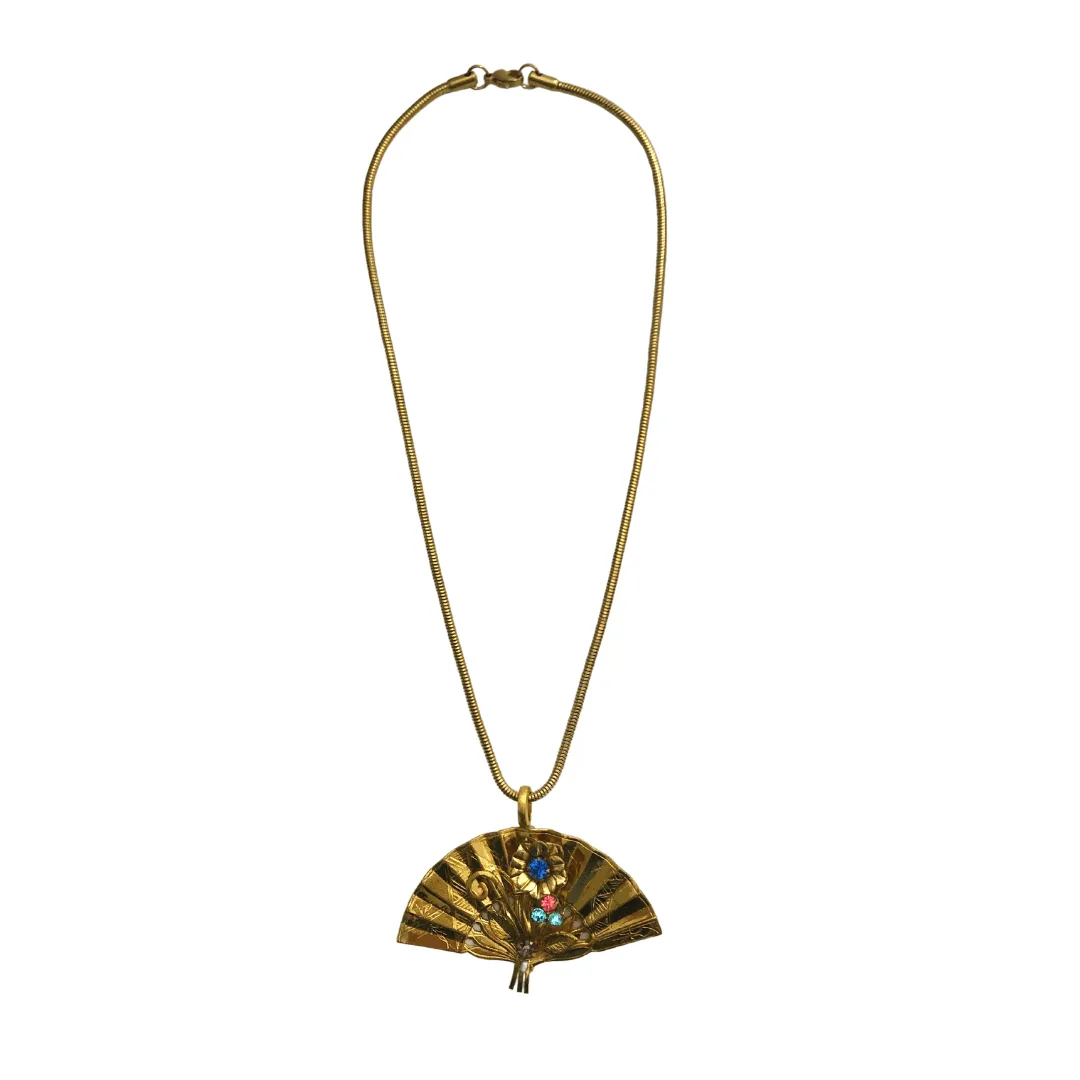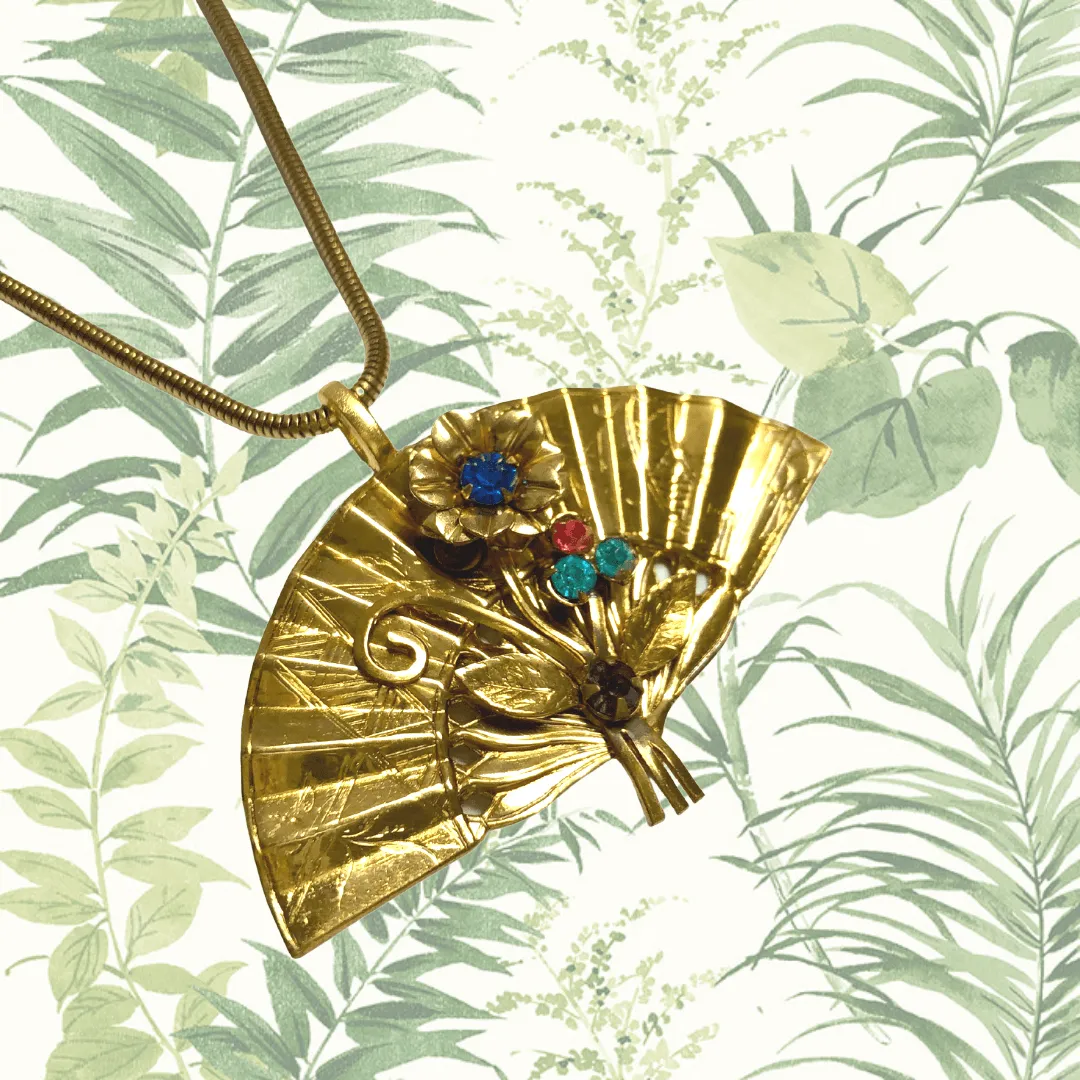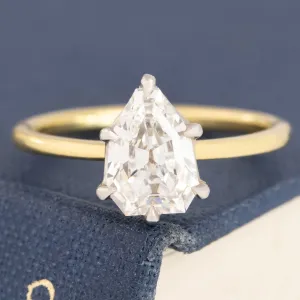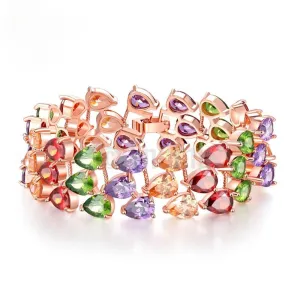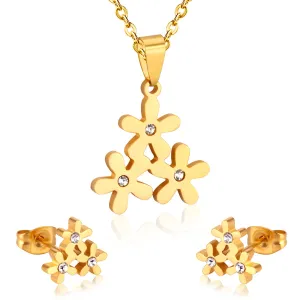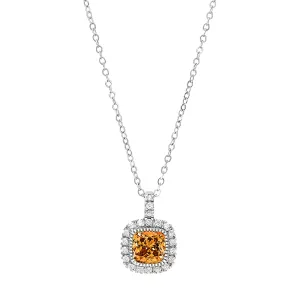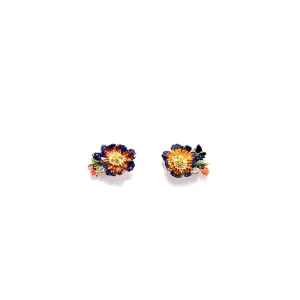Japanese golden fan pendant necklace featuring a three-dimensional bouquet of flowers sparkling with sapphire, ruby, amethyst and emerald Swarovski crystals. Intricately detailed etching gives the look of hand-painted fans from the 15th century. Fan measures 2.5" x 1.5".
- Originally a brooch -
Coro, 1958
Providence, Rhode Island
18k gold-filled, 16" snake chain with a lobster clasp. Longer chain available upon request.
Unknown Maker, 2021
Meaning Symbolism
The Japanese fan is a symbol of prosperity as it spreads out when open, similar to that of a blooming flower or the widening of wealth.
The sensu fan, also known as the folding fan, was invented in the Japanese court between the 6th and 9th centuries. They were originally tools used to transport information such as maps, textbooks, prayers, calendars, letters, court announcements and so on. Women in court had specific folding fans depending on their social standing and marriage; a symbol of their rank.
In the 15th century, professional fan painters and makers emerged all over Japan. These master artisans of the folding fan were sought after for their quality and delicacy. Soon folding fans were being exported out of Japan in huge numbers. Carried along the Silk Road, exports reached Europe and gained momentum. By the 17th century, Queen Elizabeth I of England can be seen in paintings holding folding fans. By the 18th century, ladies of all social standings carried them; by the 19th century, Impressionists scatter their paintings with women holding sensu fans. During the Victorian age in Britain, women created a fan language where different gestures indicated silent responses.

